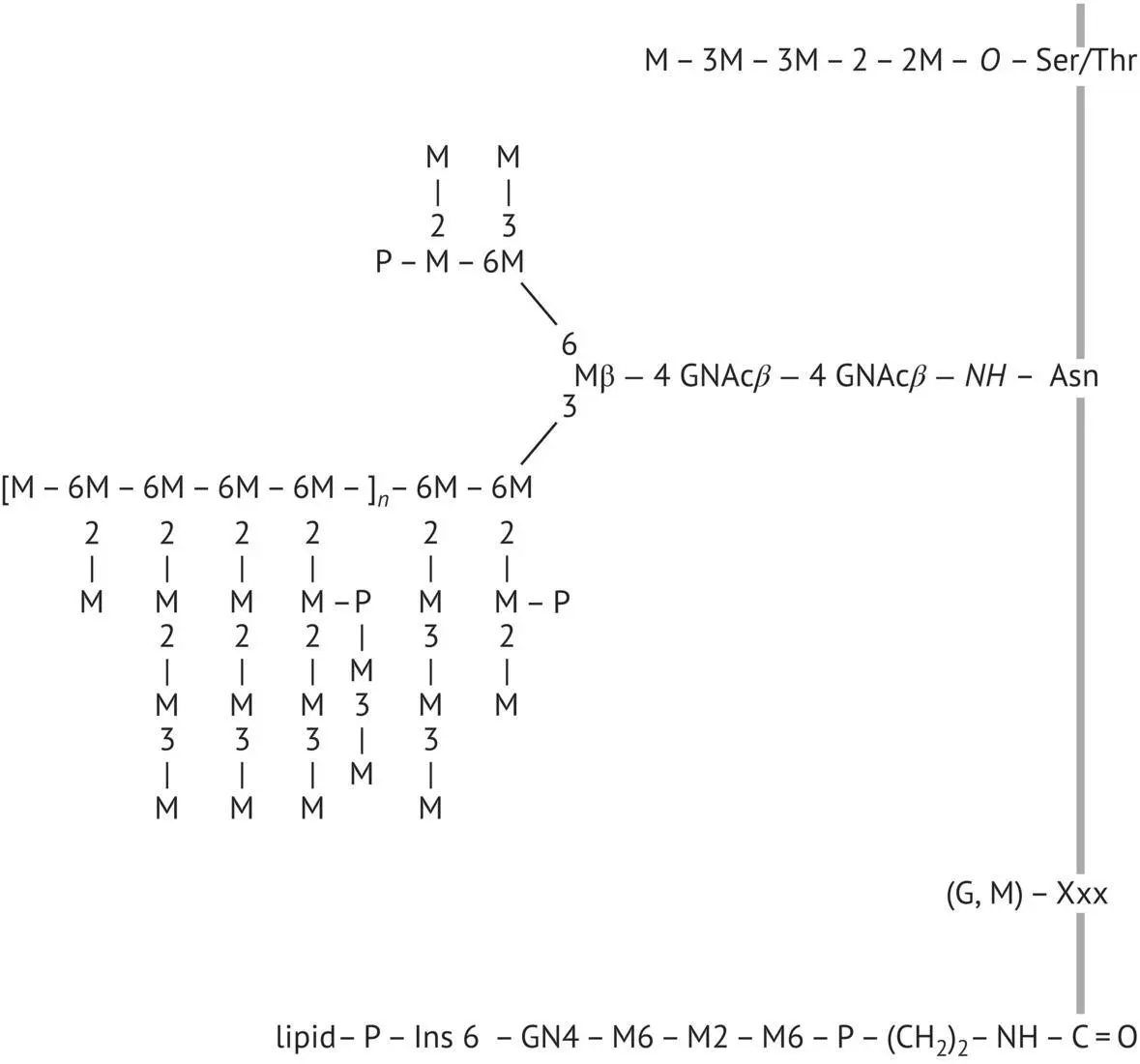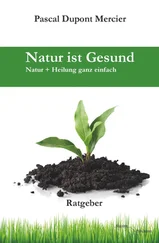1 ...8 9 10 12 13 14 ...41
1.2.2 The Chemical Structure and Function of the Cell Wall Constituents
The yeast cell wall is made up of two principal constituents: β ‐glucans and mannoproteins. Chitin represents a small part of its composition. The most detailed work on the yeast cell wall has been carried out on Saccharomyces cerevisiae —the principal yeast responsible for the alcoholic fermentation of grape must.
Glucanrepresents about 60% of the dry weight of the cell wall of S. cerevisiae . It can be chemically fractionated into three categories:
1 A β‐1,3‐glucan that is insoluble in water, acetic acid, and alkalis. It has very few branches. The branch points involve β‐1,6 linkages. Its degree of polymerization is 1,500. Under an electron microscope, this glucan appears fibrous. It ensures the shape and the rigidity of the cell wall. It is always associated with chitin.
2 A β‐1,3‐glucan, with about 1,500 glucose units, that is insoluble in water but soluble in alkalis. It has very few branches, like the preceding glucan. In addition to these few branches, it has a small number of β‐1,6 glycosidic linkages. It has an amorphous appearance under the electron microscope. It gives the cell wall its elasticity and acts as an anchor for mannoproteins. It can also constitute an extraprotoplasmic reserve substance.
3 A β‐1,6‐glucan that is obtained from alkali‐insoluble glucans by extraction in acetic acid. The resulting product is amorphous, water‐soluble, and extensively branched with β‐1,3‐glycosidic linkages. Its degree of polymerization is 140. It links the different constituents of the cell wall together. It is also a receptor site for the killer factor ( Section 1.7).
The fibrous β ‐1,3‐glucan (alkali‐insoluble) probably results from the incorporation of chitin in the amorphous β ‐1,3‐glucan.
Mannoproteinsconstitute 25–50% of the cell wall of S. cerevisiae . They can be extracted from the whole cell or from the isolated cell wall using chemical or enzymatic methods. Chemical methods make use of autoclaving in the presence of bases or a citrate buffer solution at pH 7. The enzymatic method frees the mannoproteins by digesting the glucan. This method does not denature the structure of the mannoproteins as much as chemical methods. Zymolyase, obtained from a bacterium (Arthrobacter luteus), is the enzymatic preparation most often used to extract the cell wall mannoproteins of S. cerevisiae . This enzymatic complex is effective primarily because of its β ‐1,3‐glucanase activity. The action of protease contaminants in the zymolyase also combines with the aforementioned activity to liberate the mannoproteins. Glucanex, another industrial preparation of β ‐glucanase, produced by a fungus ( Trichoderma harzianum ), has been demonstrated to possess endo‐ and exo‐ β ‐1,3‐ and endo‐ β ‐1,6‐glucanase activities (Dubourdieu and Moine, 1995). These activities also facilitate the extraction of the cell wall mannoproteins from the S. cerevisiae cell.
The mannoproteins of S. cerevisiae have a molecular weight between 20 and 450 kDa. Their degree of glycosylation varies. However, some of them, containing about 90% mannose and 10% peptides, are hypermannosylated.
Four forms of glycosylation are described ( Figure 1.2) but do not necessarily exist at the same time in all mannoproteins.
The mannose in mannoproteins may form short, linear chains with one to five residues. They are linked to the peptide chain by O‐glycosyl linkages on serine and threonine residues. These glycosidic side‐chain linkages are α ‐1,2 and α ‐1,3.
The carbohydrate part of the mannoprotein can also be a polysaccharide. It is linked to an asparagine residue of the peptide chain by an N ‐glycosyl linkage. This linkage consists of a double unit of β ‐1,4‐linked N ‐acetylglucosamine (chitobiose). The mannan linked in this manner to the asparagine includes an attachment region made up of a dozen mannose residues and a highly branched outer chain consisting of 150–250 mannose units. The attachment region beyond the chitobiose residue consists of an α ‐1,6‐linked mannose skeleton with side branches possessing one, two, or three mannose residues with α ‐1,2 and/or α ‐1,3 bonds. The outer chain is also made up of a skeleton of α ‐1,6‐linked mannose units. This chain bears short side chains composed of α ‐1,2‐linked mannose residues and an α ‐1,3‐linked terminal mannose. Some of these side chains possess a branch attached by a phosphodiester bond.

FIGURE 1.2 The four types of glucosylation of cell wall yeast mannoproteins (Klis, 1994). M, mannose; G, glucose; GN, glucosamine; GNAc, N ‐acetylglucosamine; Ins, inositol; Ser, Serine; Thr, threonine; Asn, asparagine; P, Phosphate; Xxx, the nature of the bond is not known.
A third type of glycosylation was also described. It can occur in mannoproteins, which make up the cell wall of the yeast. It consists of a glucomannan chain containing essentially α ‐1,6‐linked mannose residues and α ‐1,6‐linked glucose residues. The nature of the glycan–peptide point of attachment is not yet clear, but it may be an asparaginyl–glucose bond. Moreover, this type of glycosylation characterizes the proteins freed from the cell wall by the action of a β ‐1,3‐glucanase. Therefore, in vivo , the glucomannan chain may also comprise β ‐1,3‐linked glucose residues.
The fourth type of glycosylation of yeast mannoproteins is the glycosylphosphatidylinositol (GPI) anchor. This attachment between the terminal carboxylic group of the peptide chain and a membrane phospholipid permits certain mannoproteins, which cross the cell wall, to anchor themselves in the plasma membrane. The region of attachment is characterized by the following sequence ( Figure 1.2): ethanolamine‐phosphate‐6‐mannose‐ α ‐1,2‐mannose‐ α ‐1,6‐mannose‐ α ‐1,4‐glucosamine‐ α ‐1,6‐inositol‐phospholipid. The presence of such an anchor in certain mannoproteins does not mean that these remain bound to the membrane. They may detach via enzymatic cleavage of the phospholipids. A phospholipase C specific to phosphatidylinositol (PI) and therefore capable of completing this cleavage has been demonstrated in S. cerevisiae (Flick and Thorner, 1993). Several GPI‐type anchor mannoproteins have been identified in the cell wall of S. cerevisiae .
Chitinis a linear polymer of β ‐1,4‐linked N ‐acetylglucosamine and is not generally found in large quantities in yeast cell walls. In S. cerevisiae , chitin constitutes 1–2% of the cell wall and is found for the most part (but not exclusively) in bud scar zones. These zones are a type of raised crater easily seen on the mother cell under an electron microscope ( Figure 1.3). This chitin scar is formed essentially to ensure cell wall integrity and cell survival. Yeasts treated with Polyoxin D, an antibiotic inhibiting the synthesis of chitin, are not viable; they burst after budding.
The presence of lipids in the cell wall has not been clearly demonstrated. It is true that cell walls prepared in the laboratory contain some lipids (2–15% for S. cerevisiae ), but this is most likely contamination by the lipids of the cytoplasmic membrane, adsorbed by the cell walls during their isolation. The cell wall can also adsorb lipids from its external environment, especially the various fatty acids that activate and inhibit fermentation ( Section 3.6.2).
Читать дальше













